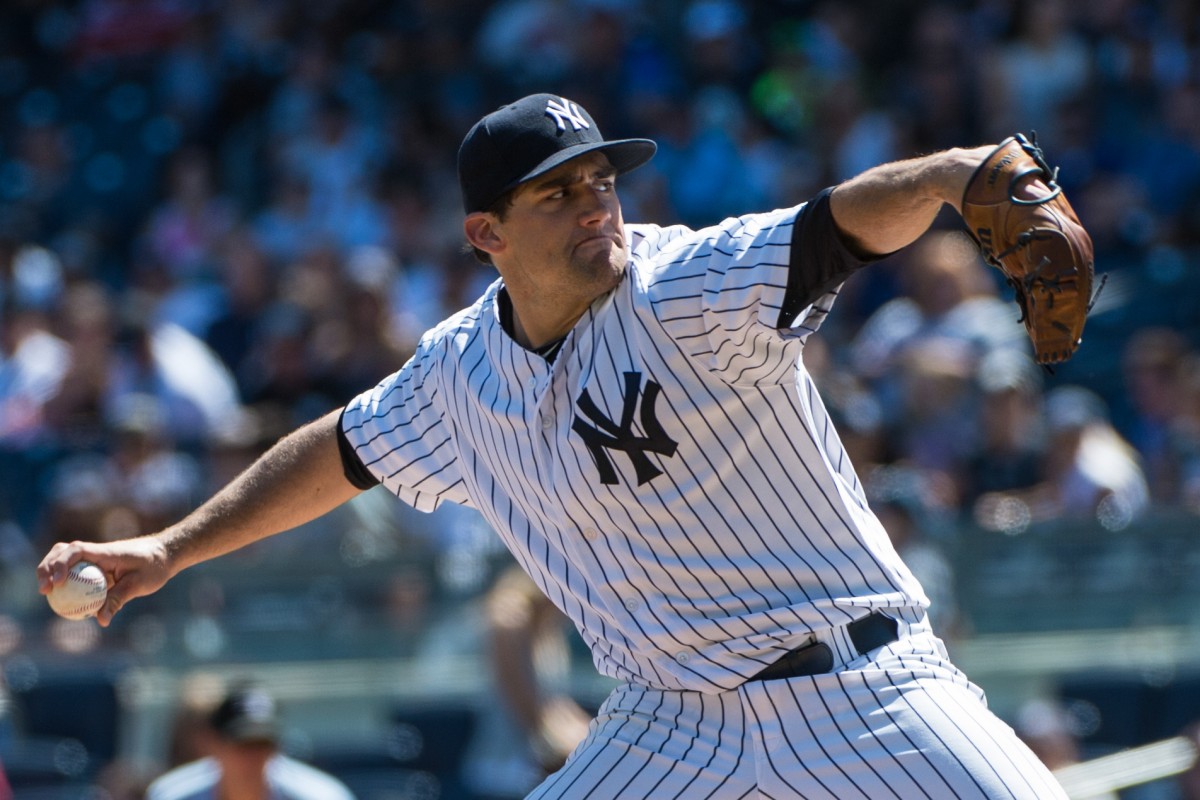In recent memory the concept of “youth” and the New York Yankees have gone together like mayonnaise and black licorice. It should be noted that I make that analogy as someone who thinks black licorice is the proverbial bees knees and mayonnaise is an absolute abomination, but I like to think it works whatever your opinion on those particular ingredients is.
The Yankees are known for being an old man team, and in some ways that will continue to be true in 2016. With Greg Bird missing the season following shoulder surgery the team will have relative youth in the middle infield and nowhere else on the diamond; at least as far as position players are concerned.
On the pitching side things are a little bit different. Last season, by trading for Nathan Eovaldi, promoting Luis Severino and getting a full season out of Michael Pineda the Yankees relied on pitchers in their twenties more than they had in recent memory. In fact, the 1171.1 innings they received from pitchers under 30 was their highest total in 44 years and their 12th highest ever.
This is a direction the franchise has been going for a number of years. The team has remained reliant on older position players they’ve slowly divested themselves of geriatric arms. Since 2011 the Yankees have increased the workload for pitchers under 30 every season, by an average of 131.1 innings a year, without a single jump less than 83.2 innings.
A lot of what goes into these numbers is driven by circumstance. Unplanned injury replacements and trade deadline rentals can throw age-related statistics off. However, the consistent upward trajectory in the case of the Yankees seems to signify a concrete direction.
Because the Yankees are never really rebuilding this hasn’t manifested itself in a traditional youth movement. With the exception of Severino, they aren’t filling their rotation with homegrown fire ballers who are barely legal drinking age. Instead, they’ve acquired pitchers from the outside younger than they are normally available.
Masahiro Tanaka was a free agent far earlier than most because he was a Japanese import. Eovaldi was a post-hype type plucked away a couple of years after a young debut. It was only possible to acquire Pineda because they traded a seemingly-elite talent in Jesus Montero to get him. As opposed to signing name-brand aces like Max Scherzer or Zack Greinke to mega-deals, they’ve brought in guys who are in the middle of their prime as opposed to the end of it.
This strategy hasn’t delivered unbelievable results, but it has been a clever use of resources, and by and large it’s worked out well.
On the bullpen side, where a lot of teams are long in the tooth, the Yankees have built around a homegrown monster in Dellin Betances and imported two other mid-peak relief aces in Andrew Miller and Aroldis Chapman. Miller has passed his 30th birthday, but by less than a season and he wasn’t yet 30 when the Yankees got their hands on him.
Often the front end of a bullpen is filled with veteran journeymen, but this season the Yankees are looking at an intriguing mix of cheap young talent. It’s arguably one of the weaknesses of the team, but there are some solid arms there and it’s hard argue with the price tag.
The result of all this is that heading into the 2016 season the Yankees only have one pitcher past his expiry date in CC Sabathia and one more past 30 in Miller. They may be older than your average squad overall, but their arms are still fresh.
Pitching is young man’s game and in the hardest division in baseball’s hardest division to pitch it seems like a good idea to be on guys who still have their best stuff. Youth is no guarantee of health or success, but it’s a good start.
Lead photo: Gregory Fisher / USA Today Sports
